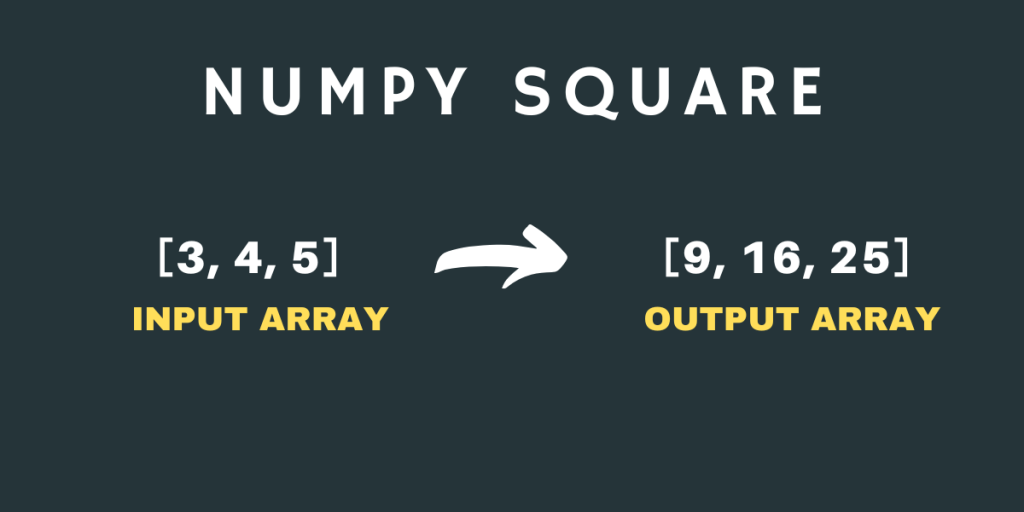Hello everyone! In this tutorial, we will be learning about the NumPy square function. This is a simple function to understand and easy to use. So, let’s get started.
What is NumPy square?
NumPy square is one of the Mathematical Functions of the NumPy Library that calculates the square value of the input number. Yes, it’s that simple by the definition. It can be used with both real and complex numbers. The square of a number is equal to the number multiplied by itself.
Syntax of NumPy square
Let’s look at the syntax of the NumPy square function.
numpy.square(input)
Here, the input can be a single number, a NumPy array of numbers as well as a complex number. Let’s write code to understand the function better.
Working with NumPy square
Let’s now start working on the Numpy.square() method to understand it through examples.
NumPy square of a single number
import numpy as np
print("Square of 5 is :",np.square(-5))
print("Square of 2.5 is :",np.square(2.5))
print("Square of 10 is :",np.square(10))
print("Square of 13.345 is :",np.square(13.345))
print("Square of -19.93 is :",np.square(-19.93))
Output
Square of 5 is : 25
Square of 2.5 is : 6.25
Square of 10 is : 100
Square of 13.345 is : 178.08902500000002
Square of -19.93 is : 397.2049
The above outputs are pretty obvious. In the last example, we have passed a negative number as input to the function and the output is a positive number.
NumPy square of a NumPy array of numbers
Let’s look at some examples where we will use the NumPy array with the function.
import numpy as np
# NumPy Array of Integral Values
a = np.array((3 , -4 , 5 , 12 , 499))
print("Input Array:\n",a)
print("Square Values:\n",np.square(a))
# NumPy Array of Floating Point Values
b = np.array((0.43 , -2.5 , 9.23 , 4.57 , 6.5))
print("Input Array:\n",b)
print("Square Values:\n",np.square(b))
Output
Input Array:
[ 3 -4 5 12 499]
Square Values:
[ 9 16 25 144 249001]
Input Array:
[ 0.43 -2.5 9.23 4.57 6.5 ]
Square Values:
[ 0.1849 6.25 85.1929 20.8849 42.25 ]
There is one task for you all, you have to use the NumPy square function with a 2-D NumPy array and observe the output.
NumPy square with Complex Numbers
Now, let’s use the NumPy square function with Complex Numbers.
import numpy as np
print("The square of 4+5j is:",np.square(4+5j))
print("The square of -1+0.5j is:",np.square(-1+0.5j))
Output
The square of 4+5j is: (-9+40j)
The square of -1+0.5j is: (0.75-1j)
The mathematics behind the calculation of the squares of the Complex Number is really interesting. It uses some basic formulae and simple identities of Complex Numbers.
Graphical Representation of NumPy square
Now, let’s plot the NumPy square curve using Matplotlib Library.
import numpy as np
import matplotlib.pyplot as plt
a = np.linspace(-10 , 10 , 30)
b = np.square(a)
plt.plot(a , b , color = "green" , marker = "o")
plt.title("numpy.square()")
plt.xlabel("X")
plt.ylabel("Y")
plt.show()
Output

There you go, you have plotted the curve of NumPy square. With that, we have completed the NumPy square function, do perform the task given in the article, and practice codes along with reading the article.
